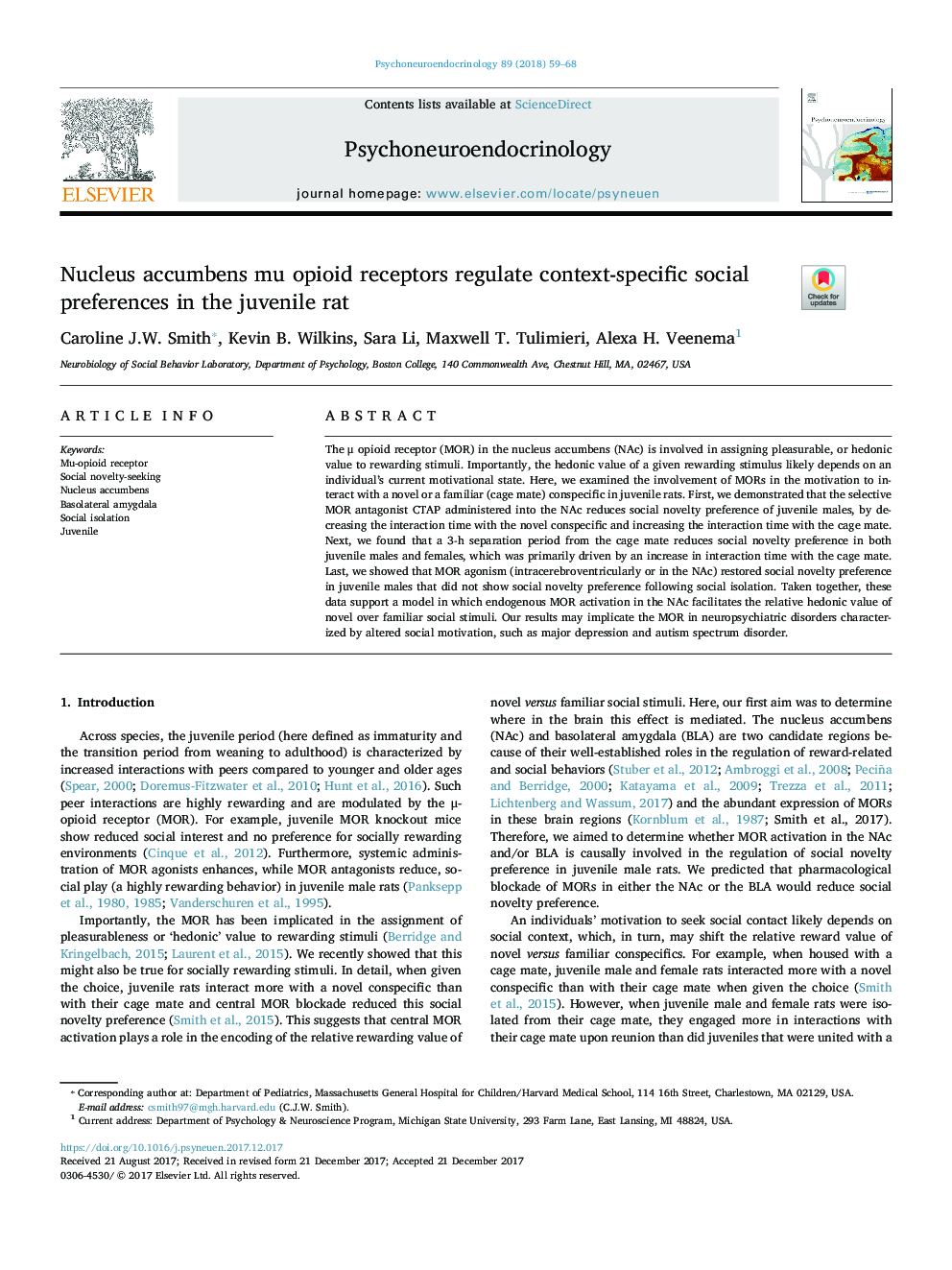| Article ID | Journal | Published Year | Pages | File Type |
|---|---|---|---|---|
| 6817765 | Psychoneuroendocrinology | 2018 | 10 Pages |
Abstract
The μ opioid receptor (MOR) in the nucleus accumbens (NAc) is involved in assigning pleasurable, or hedonic value to rewarding stimuli. Importantly, the hedonic value of a given rewarding stimulus likely depends on an individual's current motivational state. Here, we examined the involvement of MORs in the motivation to interact with a novel or a familiar (cage mate) conspecific in juvenile rats. First, we demonstrated that the selective MOR antagonist CTAP administered into the NAc reduces social novelty preference of juvenile males, by decreasing the interaction time with the novel conspecific and increasing the interaction time with the cage mate. Next, we found that a 3-h separation period from the cage mate reduces social novelty preference in both juvenile males and females, which was primarily driven by an increase in interaction time with the cage mate. Last, we showed that MOR agonism (intracerebroventricularly or in the NAc) restored social novelty preference in juvenile males that did not show social novelty preference following social isolation. Taken together, these data support a model in which endogenous MOR activation in the NAc facilitates the relative hedonic value of novel over familiar social stimuli. Our results may implicate the MOR in neuropsychiatric disorders characterized by altered social motivation, such as major depression and autism spectrum disorder.
Related Topics
Life Sciences
Biochemistry, Genetics and Molecular Biology
Endocrinology
Authors
Caroline J.W. Smith, Kevin B. Wilkins, Sara Li, Maxwell T. Tulimieri, Alexa H. Veenema,
